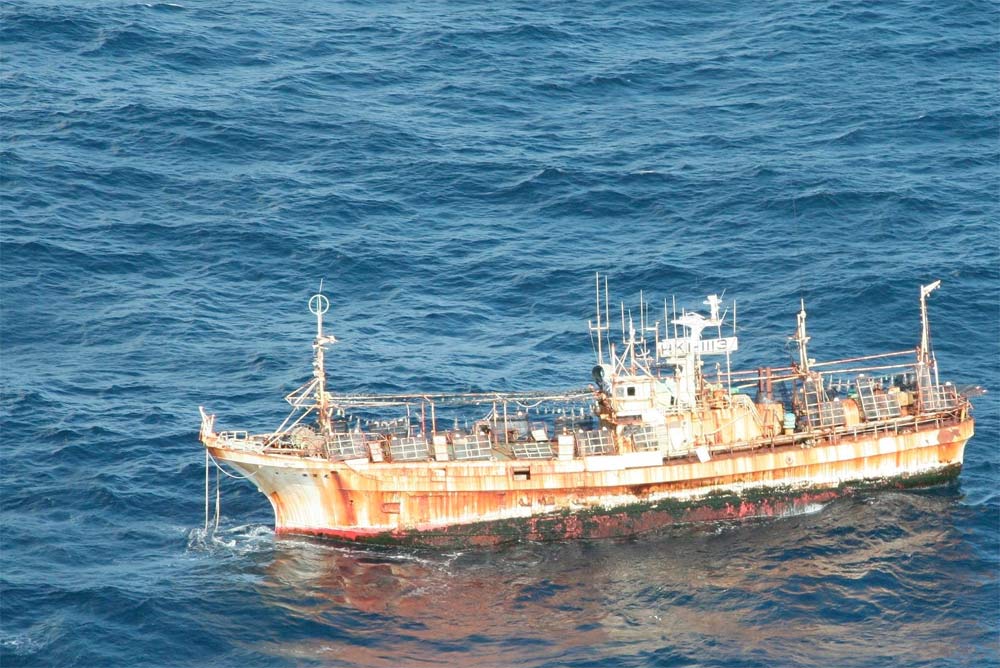Tsunami 'Ghost Ship' Sinks Off Alaska Coast

A Japanese fishing vessel that seems to have drifted unmanned at sea since the 2011 Fukushima earthquake and tsunami has sunk to the bottom of the Gulf of Alaska after the U.S. Coast Guard fired at the so-called ghost ship on Thursday (April 5).
The Coast Guard Cutter Anacapa, a 110-foot patrol boat, used its 25mm chain gun to fire high-explosive rounds at the derelict ship, Petty Officer David Mosley told LiveScience. "These rounds punctured the hull of the vessel causing it to take on water and sink." The vessel sank at 6:15 p.m. local time some 180 miles (290 kilometers) west of the southeast coast of Alaska, in waters more than 6,000 feet (1,828 meters) deep.
[The Science Behind Japan Earthquake and Tsunami]
The drifting vessel was considered a navigational hazard, as it was located in busy shipping lanes near the Dixon Entrance in Southeast Alaska, according to a statement by the coast guard.
The Canadian coast guard had spotted the vessel, called Ryou-un Maru, more than a week ago in Canadian waters; it drifted into U.S. waters Saturday, with its location verified during flyovers by an Air Station Kodiak HC-130 Hercules airplane on Saturday and Monday.
Once the ship began to sink on Thursday, it took some four hours to vanish beneath the water, MSNBC.com reported.
While Petty Officer Mosley isn't sure why the vessel is being called a "ghost ship," he suspects it was coined such due to the fact it has been drifted at sea unmanned and without power.
Sign up for the Live Science daily newsletter now
Get the world’s most fascinating discoveries delivered straight to your inbox.
"Now that the ship has been sunk, it will remain on the bottom of the ocean while nature reclaims the vessel," Mosley said.
Follow LiveScience for the latest in science news and discoveries on Twitter @livescience and on Facebook.
Jeanna Bryner is managing editor of Scientific American. Previously she was editor in chief of Live Science and, prior to that, an editor at Scholastic's Science World magazine. Bryner has an English degree from Salisbury University, a master's degree in biogeochemistry and environmental sciences from the University of Maryland and a graduate science journalism degree from New York University. She has worked as a biologist in Florida, where she monitored wetlands and did field surveys for endangered species, including the gorgeous Florida Scrub Jay. She also received an ocean sciences journalism fellowship from the Woods Hole Oceanographic Institution. She is a firm believer that science is for everyone and that just about everything can be viewed through the lens of science.










